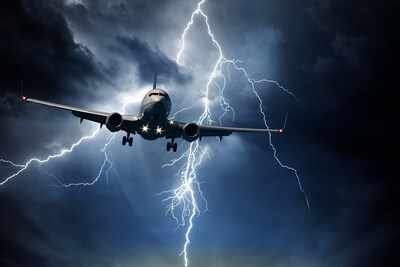Artemis Aerospace explores how turbulence occurs
WISTON, England, Oct. 22, 2024 /PRNewswire/ -- Changing weather conditions across the globe can lead to increased likelihood of turbulence during a flight. Artemis Aerospace takes a reassuring look at how an aircraft copes with extreme conditions.
We've all been on a plane when the captain announces an area of possible turbulence ahead and asks everyone to buckle up for a bit. More often than not passengers don't really notice, but occasionally flying through a rough patch can be a bit alarming and, very rarely, quite frightening.
Earlier this year a Singapore Airlines Flight from London to Singapore made global headlines when it encountered severe turbulence, forcing the plane to make an emergency landing in Bangkok. Unfortunately, it resulted in 71 passengers being injured, some seriously, and one sadly passing away due to a heart attack. The plane had dropped dramatically and any untethered articles such as cutlery and crockery, handbags and mobile phones were thrown in all directions. Many passengers who weren't wearing seatbelts at the time hit the ceiling sustaining head injuries, and the entire interior of the plane was badly damaged.
So, what is turbulence? First used around the early 1500s, the word comes from the Late Latin 'turbulentia' which is translated as 'trouble' or 'disquiet'. By around 1918 it had become known to mean the atmospheric eddies which can affect air travel; unstable or irregular air movement caused by changes in wind speed or direction such as cold or warm weather fronts, jet streams and thunderstorms. It triggers changes in altitude and air speed and ranges from relatively minor to significantly hazardous.
Last year, scientists from Reading University produced a study on clear-air turbulence, which is harder for pilots to avoid as it gives no visual clues to its presence such as cloud cover. They found that severe turbulence had increased by 55% between 1979 and 2020 on a typical North Atlantic route, with routes in Europe, the Middle East and the South Atlantic also seeing major increases. The study states that the changes in wind speed at high altitudes are due to warmer air from carbon emissions and climate change. It's therefore likely that passengers will experience more turbulence in future.
However, the aircraft they travel in and the pilots who fly them are more than capable of handling any turbulence thrown at them. The severe example mentioned above is extremely rare. Prior to every flight, pilots will have undertaken a comprehensive briefing on the types of weather they will are expecting to encounter throughout the journey, using information from radar systems, algorithms and satellite output provided by meteorologists. Areas of possible turbulence are pinpointed and, as far as possible, a flight plan is created which avoids them. Pilots are also trained extensively on how to cope with turbulence during a flight.
However, the most important thing for nervous flyers to remember is that aircraft are built to withstand virtually any kind of turbulence, and today's designs are incredibly safe. For example, the wings may look solid, but while they are very stable, they are also flexible and able to absorb some of the energy from turbulence, due to the presence of carbon fibre composites. When a commercial plane is designed, it's tested to ensure the wing can be flexed by several metres; the Airbus A350's wings can flex over 5 metres.
In addition, all commercial planes have positive stability, which means that if they are displaced from their flight path by turbulence they will return to their initial position. Planes are usually built with a weighty 'nose' to keep the centre of gravity ahead of the wings which are the centre of 'lift'. Some aircraft also have a Gust Alleviation System which works by adjusting the aircraft's control surfaces, such as elevators, rudder and ailerons, to offset wing bending and reduce possible resulting metal fatigue.
While turbulence may be alarming for passengers, for pilots and cabin crew it's usually all in a day's work. The best advice to avoid its effects is to sit near the front of the aircraft, keep your seatbelt fastened throughout the flight, and trust the pilot to bring you safely to your destination.
Artemis Aerospace offers an innovative approach to component solutions for the aviation sector. Established in 1999, the company has earned a reputation for outstanding customer service by solving problems and providing a range of realistic options that offer customers the flexibility and freedom to choose a solution that suits their timescale and budget. Its services include component supplies, component repairs, lessor support, flight simulation hardware support, consignment stock management and global aircraft logistics.
With decades of expertise in global aviation logistics, the expert team works with trusted MROs, OEMs, and aftermarket suppliers around the world to offer 24/7 support to its global customer base.
Photo - https://mma.prnewswire.com/media/2537069/Artemis_Aerospace_Turbulence.jpg
![]() View original content to download multimedia:https://www.prnewswire.com/news-releases/artemis-aerospace-explores-how-turbulence-occurs-302283088.html
View original content to download multimedia:https://www.prnewswire.com/news-releases/artemis-aerospace-explores-how-turbulence-occurs-302283088.html
SOURCE Artemis Aerospace


